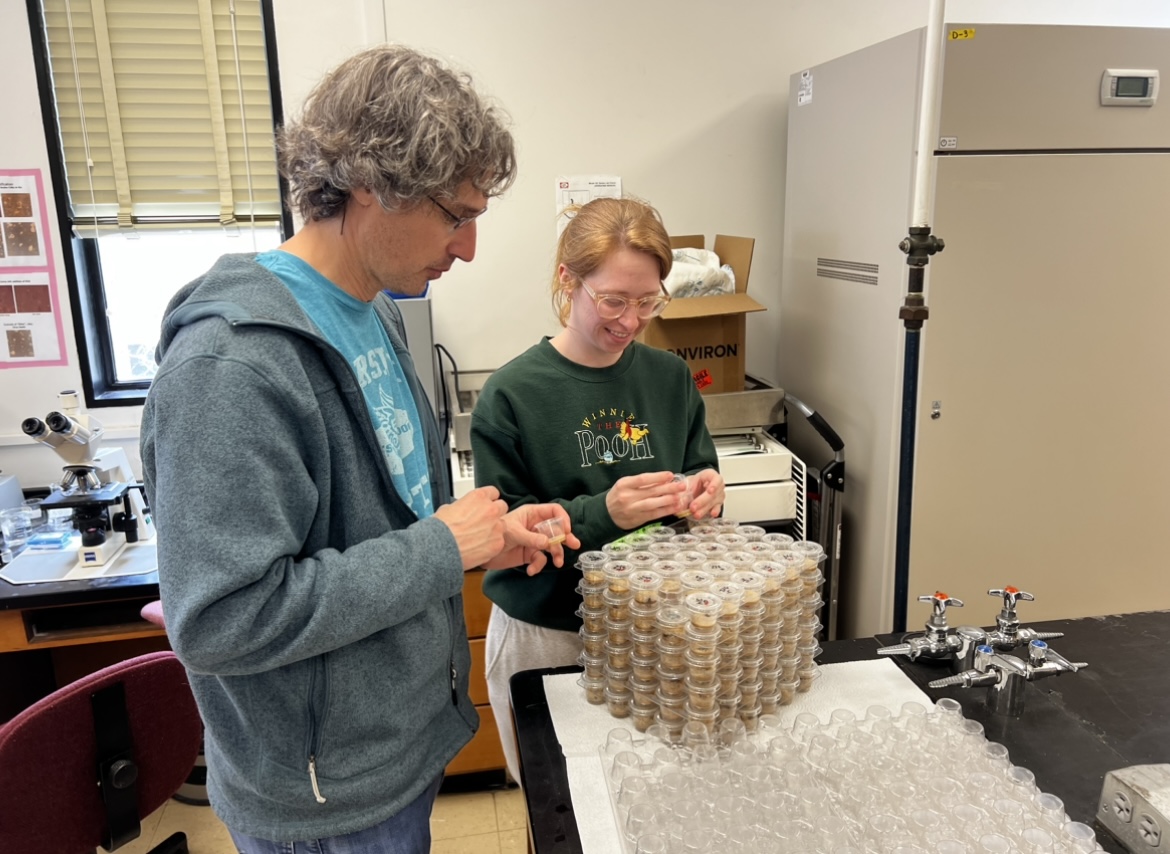Lab Investigating How Temperature Affects Host-Pathogen Interactions
March 27, 2024
The tug-of-war between hosts and pathogens has been on the mind of Dr. Bret Elderd, LSU's Biological Science Ronald and Denise Alvarez Professor, for 20 years as he continues to examine outbreaks of disease.

His previous research showed that temperature affects how quickly diseases are transmitted. His lab is now examining how changes in temperatures impact disease transmission through an evolutionary lens.
For a disease or a pathogen to get someone sick, it has to spread between carriers or hosts of the disease. For humans and the flu, infection can be as simple as randomly bumping into someone who already has the flu.
The Elderd lab studies diseases in caterpillars that are lethal and are spread by the caterpillar eating a leaf covered in virus. When an infected caterpillar dies, it spreads more virus onto the leaves of the plant and the infection cycle continues.
For any infection, including caterpillars and their diseases, there are always individuals who are more vulnerable and less vulnerable to getting sick.
"As temperatures increase for this particular disease, that distribution [between the more and less vulnerable individuals] gets narrower so that everybody has a more equal chance of getting sick," said Elderd.
He believes that has to do with the fact that when you increase temperatures with any organism, metabolism goes up and they're going to eat more. When they eat more, they have a greater chance of finding virus on the leaf and becoming infected.
Their previous research has only looked across a single generation. They wonder how these effects may play out over multiple generations - will the host/caterpillar evolve to become more immune to the disease or will the pathogen evolve to become more deadly. So far, when examining the amount of virus needed to lethally infect the caterpillar, the results depend on temperature.
"What we've found over multiple generations is that at higher temperatures, that lethal dose increases," said Elderd. "At lower temperatures, that lethal dose doesn't change at all."
How these changes affect disease transmission between caterpillars is an open question that the lab is trying to answer.